Amid ongoing excavations at the Carlisle Cricket Club, archaeologists have unearthed yet another Roman statue head as well as a gemstone depicting the god Silvanus.
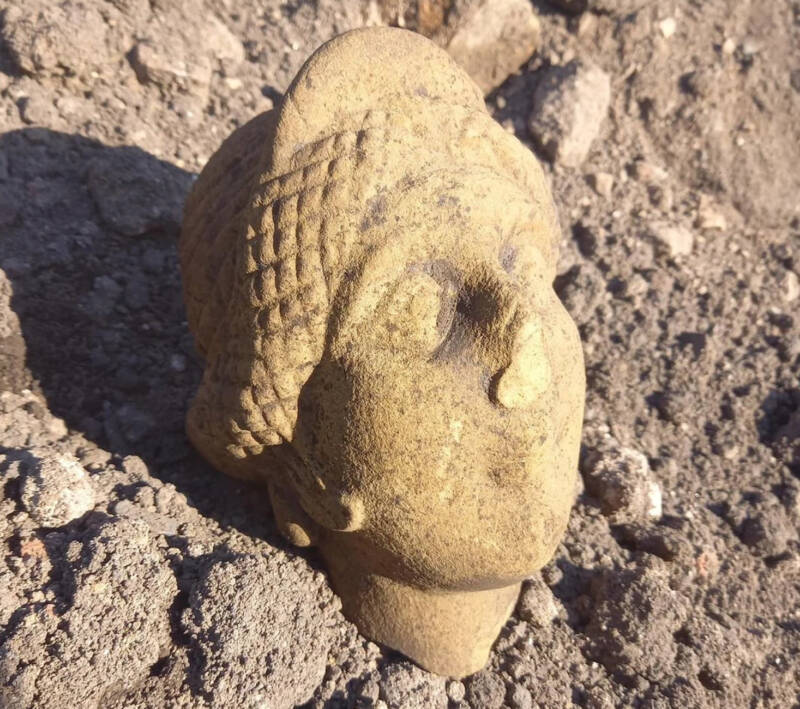
Frank GieccoThe carved Roman head found in Carlisle depicts a woman, though it is unclear who it is meant to represent.
Archaeologists in England working near the historic Hadrian’s Wall have unearthed a carved stone head from the Roman era and an ornate gem depicting Silvanus, the god of the countryside.
This discovery is the latest in a series of finds from the excavation team headed by Frank Giecco, an authority on the history of Roman Britain. In all, Giecco and his team have made more than 5,000 finds at the site since 2021, and he says that many of them have “literally just come out the ground.”
A Carved Head From The Roman Era Is Unearthed At Hadrian’s Wall
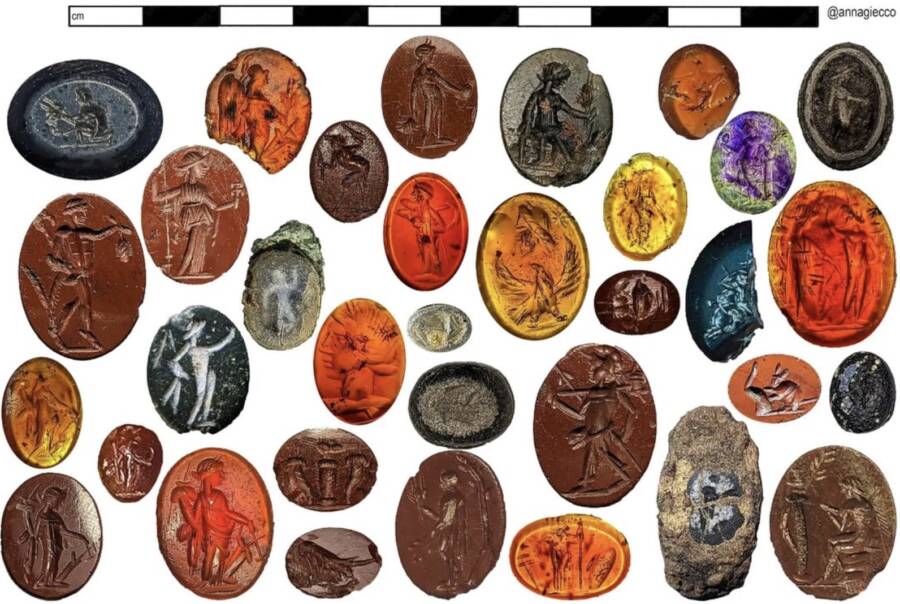
Anna GieccoVarious decorated gemstones found at the Carlisle site.
Giecco’s team has been working to excavate the site of an important Roman fort near Hadrian’s Wall, located at what’s now the Carlisle Cricket Club, for several years. To date, they have made a startling number of discoveries. The standout discoveries of this year so far, however, are the carved head and the Silvanus gem.
“The style of cutting… is distinctive and it can be ascribed to the gem workshop based at Carlisle,” University of Oxford professor Martin Henig told The Daily Mail. “Most of the gems from that workshop are opaque red jasper, but this is translucent golden carnelian and really glows. It shows Silvanus, god of the woodland and wild places, not all that common in Roman Britain but there was a temple at Bewcastle dedicated to a local version of the god, Cocidius.”
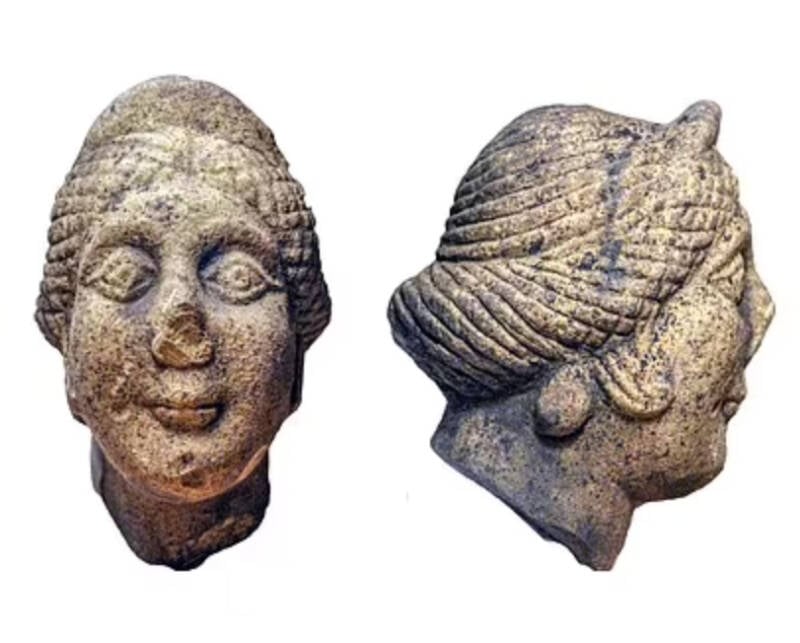
Anna GieccoPrevious excavations have revealed similar carved heads, alongside a variety of other artifacts.
Henig further described the Silvanus gem, comparing it to a similar gem that had been found to the east at South Shield. The South Shield gem depicted Silvanus as a huntsman, whereas the recently discovered Silvanus gem portrays him more as a woodcutter and pruner, notably with a dog.
“In one hand he holds a bushy branch carved with thick strokes of the drill; in the other a sickle… The most refined cutting is displayed in his hair and hairband. I feel the gem cutter would have felt especially satisfied by this lovely and distinctive gem, which presumably dates like other gems from the workshop to the early third century AD.”
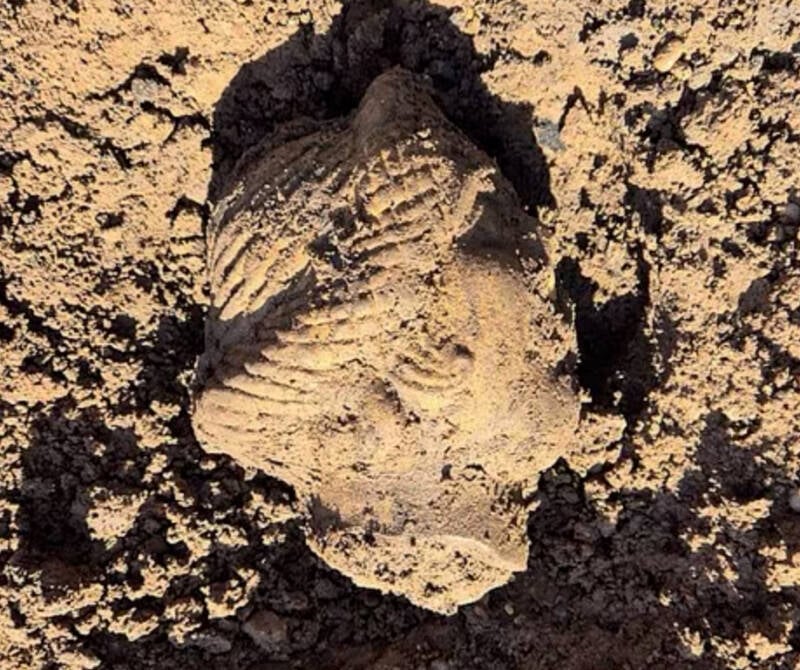
Anna GieccoThe carved Roman head lying in the spot where it was first unearthed at the Carlisle site.
As for the carved head discovered at the site, it depicts a woman, though it is currently unclear who the woman was meant to be. One theory suggests that her distinctive headdress links her to Empress Julia Domna, though she may have been a goddess or some other important figure.
Of course, these aren’t the only ancient artifacts that Giecco and his team have uncovered at the Carlisle site.
A Wealth Of Ancient Artifacts Found During Recent Excavations At Carlisle
During the current excavation, Giecco and his team also found two mysterious platforms in a square area. There are a few theories as to their purpose, but the two leading ideas are that it was a ritual site or perhaps part of a mausoleum. The square is roughly 10 feet by 10 feet, and described by Giecco as “enigmatic.”
“We don’t really know what that is yet,” he said. “But the weirdest thing is that we’ve got just masses of beautifully-decorated Samian [pottery, a type of fancy Roman tableware] from this season.”
Several bowls are decorated with depictions of Cupid and Venus. The team also found a figurine of another unidentified goddess and a coin depicting the emperor Hadrian. Giecco described it as “the most beautiful coin we’ve had since we’ve been on site.”
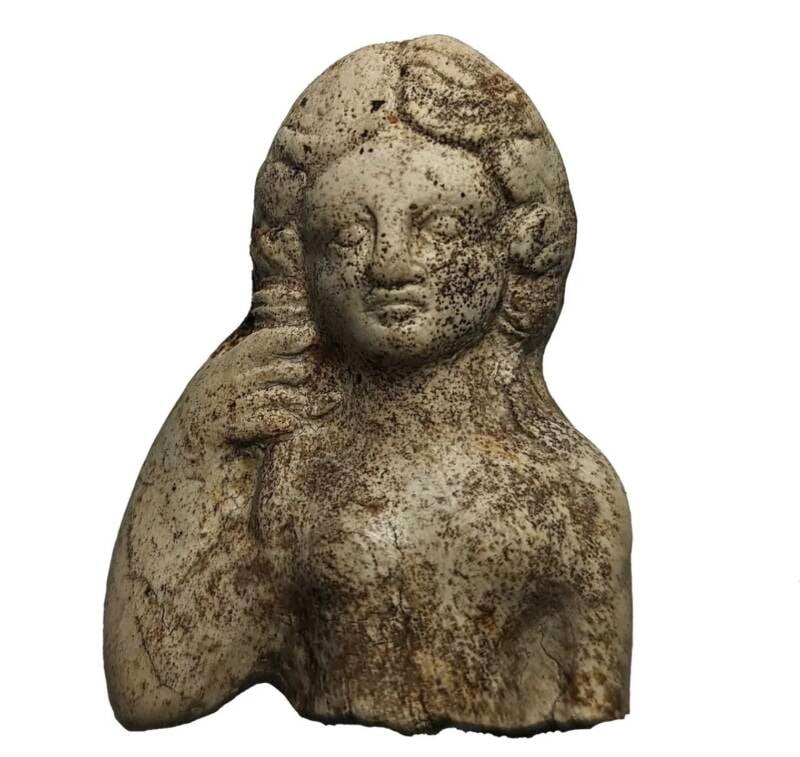
Anna GieccoA statue of the goddess Venus found at the site.
Last May, another two sculpted Roman heads dating back to the second century were also found at the site by a retired American nurse, Carolyn Veit, who joined the excavation as a volunteer. Funnily enough, Veit’s lucky find was a sculpture depicting none other than the goddess of luck herself, Fortuna.
In May 2024, archaeologists unearthed a chunk of Tyrian Purple, a rare pigment that was once used to color the robes of the most elite members of Roman society. At one point, Tyrian Purple was considered to be more valuable than gold — and Giecco described the Carlisle find as “possibly the only example of a solid sample of the pigment in the form of unused paint pigment anywhere in the Roman empire.”

Frank GieccoExcavation leader Frank Giecco.
These discoveries were believed to be part of what was once a large fountain or sculpture from a bathhouse that stood at the site in the centuries before Rome fell. Regardless, the site has proven to be valuable and rife with artifacts, and should more funding be acquired, perhaps future excavations will reveal even more ancient secrets.
In the words of Frank Giecco, “The site never fails to amaze me.”
After reading about these new discoveries from Hadrian’s Wall, read about some of the most famous gladiators in Roman history. Then, read about the worst Roman emperors.





